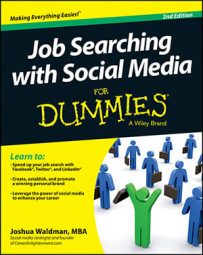Some people simply don’t do well on camera. If you fall into this category, all hope for your job search isn’t lost. You can still demonstrate your presentation skills and professionalism with a slideshow commercial, which entails presenting your story audibly and supporting it with images and words.
You can use common slideshow software, such as Microsoft’s PowerPoint or Apple’s Keynote, to put together a commercial for yourself. To add more dynamic transitions between slides, check out Prezi. Prezi is a free web-based presentation editor that uses big, bold movements that zoom and scale to give your presentation a sense of movement and energy.
Regardless of which program you use, the steps are pretty much the same:
Write out a script that’s a maximum of three to five minutes in length (about 750 words).
Each sentence of your script should narrate a different slide. In the “Notes” section of each slide, paste in one sentence from your script.
Include an image or impact word for each slide.
Images speak a thousand words, and when used in a slideshow, they emotionally reinforce your spoken point. Note that taking this approach is quite different from going the usual bulleted-list route. Don’t be afraid of having nothing more than an image on the screen. Check out Flickr for creative commons content you can use. Also be sure to include at least one picture of yourself.
Note that some slides work better with impact words, either in addition to an image or on their own. Impact words are the main topic, or the essential meaning, of what you’re saying at a given time.
If you’re telling a story about a success, consider showing an image of someone jumping for joy with the words on the slide proclaiming, “150% of quota!” and then fade to black with nothing more than the words, “But it didn’t end there…”
Edit the transitions between slides.
Make sure the words appear on the screen the way you want them to with each click. The last thing you want to worry about when you’re reading and recording your script is what happens when you click. Click one time per line to simplify.
For example, you can structure your transitions like this: “Hi, I’m Joshua, and I love managing large, complicated projects” (click, new slide shows up). “Let me tell you about a time when…” (click, words appear on the new slide), and so on.
Take a practice run when your slides are done.
The goal is to reach the end of your script while progressing through the slideshow easily. Make sure the slides transition smoothly the way you want them to.
Run through your presentation, script, and slides while recording the screen.
Screen-recording software simply records everything happening on your computer screen as a movie. If you don’t already have screen-recording software, download Jing, a free program that records up to five minutes at a time. You can also try adding voice-over to your slides with Brainshark, which is an elearning platform with great sharing capabilities.
Make several different versions and remember to save each recording at the end. Then you can splice together the best parts of each take.
Upload your commercial to the video-sharing sites of your choice.
Recording software allows you to save the recording on your computer for uploading. From there, you can share your video with the world!
You can check out an example of a slideshow video created in Keynote with Camtasia for screen capture to promote a social media curriculum developed for WorkSource Portland Metro.

